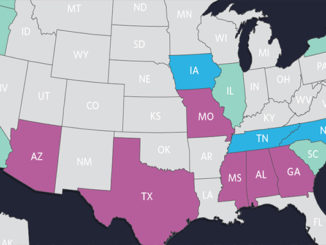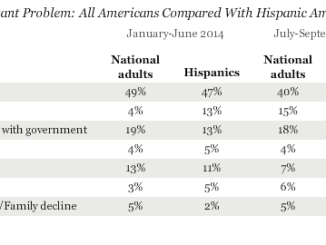
by Daniel Henninger
The notion of Latin immigrants displacing American workers is largely false.
ObamaCare launched itself into consciousness on the phrase “46 million uninsured,” just at the moment health care and its insurer overlords were starting to discover ways to use more sophisticated analysis technologies to deliver medicine and even insurance coverage more efficiently. Health care’s nascent innovations will now simmer down to nothing on the back burner while ObamaCare boils over and burns everything it touches in the next several years. Next up, immigration, and here it’s the Republicans’ turn to lead from behind the curve.
From its inception, the most relevant tensions inside the immigration issue have had to do with disputes over jobs. At the low end, Mexicans and other Latin-American immigrants are said to be taking employment from low-skilled Americans. At the high end, competitors from India and China are accused of taking U.S. engineering jobs.
To their credit, the architects of the Senate immigration bill have California”s agriculture sector is staring at a permanent shortfall of workers.
included provisions to create a guest-worker program for low-end skills and a system of increased visas for skilled workers that would provide breathing space to the high-tech sector. But the idea that people from Latin America or Southeast Asia have been taking American jobs has been a brown herring, deflecting political energies from more serious problems in the U.S. labor force.
The Mexicans and other Latin Americans have essentially been pilot fish swimming alongside the U.S. economic whale. Researchers who track flows of Latin American immigrants within the U.S. have noted a decline in their presence around the metropolitan areas of such traditional “gateway” states as California, New York, Texas, Illinois and Florida. Over the past 20 years, these workers have shown up in some unlikely places, such as Omaha, Neb., where migrants work in meatpacking plants. Georgia has several immigrant clusters: poultry workers in Hall County, or workers with carpeting and flooring companies in Murray County.
In Florida, Guatemalans and Puerto Ricans now fill the state’s central I-4 corridor, often working in the tomato fields. In North Carolina around upscale Winston-Salem and Greensboro, the state’s meatpacking, textiles, poultry processing and agriculture survives on flows of immigrant workers. Arkansas, Tennessee, South Carolina and Alabama have seen similar arrivals of jobs-seeking migrants.
This is a lot of states, and for them such basic, literally hands-on businesses still produce economic strength. Anyone connected with these industries knows that the notion of Latin immigrants displacing Americans is largely false. The businesses are American-owned, but few Americans will work in them. The California agriculture sector has become a grim object lesson in this reality.
There has been no significant presence of Americans workers in California’s farm fields since at least the 1950s. Now that Mexico’s economy is growing well above its weak historic average and needs workers, the California ag sector is staring at a permanent shortage of workers. That guest-worker program in the immigration bill could be a day late and a dollar short for California agriculture, which itself would begin to migrate its worker-less industry outside the U.S.
Over time, the same permanent worker drain could occur in other migrant-dependent states if their labor force goes away. It will not be replaced by Americans. Republicans may be having a field day now attacking the damage ObamaCare is doing to private workforces. But if the GOP’s “enforcement-first” caucus in the House prevails, the odds are good that a suppressed supply of migrant labor will blow a hole in state economies across the South. Come the 2018 midterms, Democrats could be having a field day of their own with “safe” GOP House members who’ve proven equally clueless about private-sector employment realities in their own stronghold states.
Like magicians, the politicians have the country mesmerized by the immigration fight, while the real causes of U.S. underemployment fester. Amid persistent 7.6% unemployment, Deloitte and other research firms continue to report that U.S. manufacturers can’t find enough Americans with the right technical skills or reliable workplace habits to meet customer demand for their products. And that shortage is expected to worsen as skilled baby boomers retire. No one has found a way to blame this shortage on Indian engineers.
The U.S. Bureau of Labor Statistics, in its most recent comprehensive projection of available occupations over the next 10 years, lists an off-the-charts need for 5.7 million workers in health care and social assistance—mostly for retired baby-boomer care. Does the GOP plan to compete for the support of the workers taking care of their parents?
The U.S. has a jobs problem all right, but one that only a healthy, functioning labor market can cure. Democrats have already tanked health care’s 16% of the economy. A Republican self-immolation on immigrant workers will distort and flatten swaths of what’s left of the labor market. And the baby boomers in their golden years? A lot of them will go touring for health care in Costa Rica and seek their retirement care in, you guessed it, Mexico.



